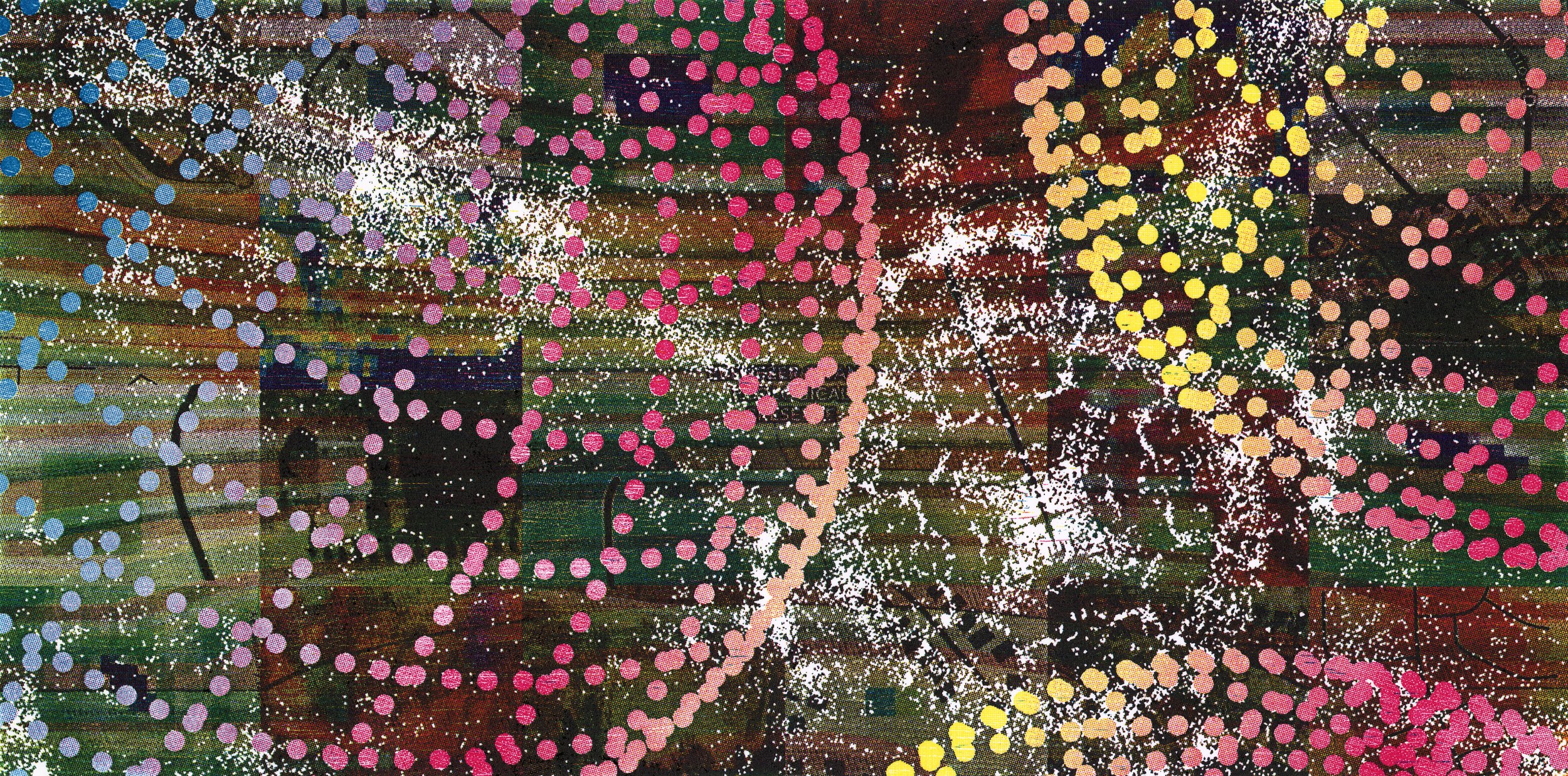
Ebenezer Swamp: Remote Sensing
21x12", Process Color Relief Print, Audio, VR Imagery, 2024
The concept behind this piece was largely influenced by how sound (and in this case speech) can be a disturbing and displacing force. It also focuses on how our use of data and information create very detailed portraits of our world and shape our choices with an illusion of certainty. But ultimately, the reactions and results of our choices can create further uncertainty in our surroundings.
The original panorama for this piece wasn’t created using HDRIs like the other two prints. Instead, it was created using two main sources. The first was a combination of captured images from satellites in a Low-Earth Orbit network (visualized in the CMYK dot grid in the foreground) and statistical data visualizations of aggregate moisture content, vegetation density, surface water temperatures, and heat maps from the Ebenezer Swamp Ecological Preserve and the various retention and detention ponds in the subdivision surrounding the preserve. This composited image is then altered by the second source, the SACKETT v. ENVIRONMENTAL PROTECTION AGENCY Supreme court ruling. I converted the entire text of the court ruling into hexadecimal code values and injected them into the code of the first composite image. The visual disturbances and glitches in the digital environment of this print are a result of their forced interaction.
The main audio element of this piece is derived from a Montevallo City Council meeting where members are voting on whether to accept the land disturbance permit and bond to create a new phase of one of surrounding subdivisions. One of the major topics discussed is the creation of retention ponds and detention ponds. A retention pond is used to hold and distribute rain runoff, which in turn helps prevent flooding. A detention pond is a large, constructed depression in a landscape that receives and stores the stormwater runoff from large drainage areas. These functions are naturally performed by the wetlands within the swamp. As we are disturbing and reshaping the lands around the swamp, we are having to engineer and imitate one of the many essential functions the swamp provided. I decided to use one piece of audio from the meeting; the final “aye” to approve the land disturbance permit and bond at the end of the meeting.
The “aye” has been visualized using a chladni plate simulator and is seen as a large white particle field in the midground of the piece. A chladni plate is a specialized experiment that shows how sound vibrations can create regular displacements and disturbances. Chladni plates fall under the study of cymatics. Cymatics is the study of visible sound and vibrations, and how sound waves interact with different materials to create geometric patterns and shapes. The experiment starts with an evenly dispersed particle field on the surface of a plate. This stable field is then subjected to a sound wave or vibration that scatters the individual particles revealing areas of high and low displacement. The resulting chladni figure visualizes how the sound disturbs its surroundings as it vibrates. These experiments along with similar experiments largely formed our understanding of modern acoustics.


